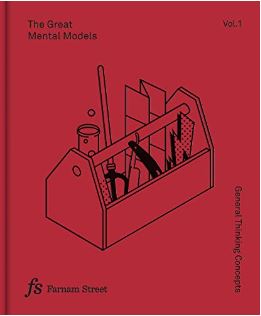
These are my favorite parts of this insightful look into how we think and make decisions:
In life and business, the person with the fewest blind spots wins.
This book is about avoiding problems.
Contrary to what we’re led to believe, thinking better isn’t about being a genius. It is about the processes we use to uncover reality and the choices we make once we do.
First, we’re so afraid about what others will say about us that we fail to put our ideas out there and subject them to criticism. This way we can always be right. Second, if we do put our ideas out there and they are criticized, our ego steps in to protect us. We become invested in defending instead of upgrading our ideas.
Most geniuses—especially those who lead others—prosper not by deconstructing intricate complexities but by exploiting unrecognized simplicities.
What you need is to understand the principles, so that when the details change you are still able to identify what is really going on. This is part of what makes the Great Mental Models so valuable—understanding the principles, you can easily change tactics to apply the ones you need.
The map of reality is not reality. Even the best maps are imperfect.
In order to use a map or model as accurately as possible, we should take three important considerations into account: Reality is the ultimate update. Consider the cartographer. Maps can influence territories.
A circle of competence cannot be built quickly.
Three key practices needed in order to build and maintain a circle of competence: curiosity and a desire to learn, monitoring, and feedback.
First principles thinking is one of the best ways to reverse-engineer complicated situations and unleash creative possibility.
Socratic questioning generally follows this process: Clarifying your thinking and explaining the origins of your ideas. (Why do I think this? What exactly do I think?)
Challenging assumptions. (How do I know this is true? What if I thought the opposite?)
Looking for evidence. (How can I back this up? What are the sources?)
Considering alternative perspectives. (What might others think? How do I know I am correct?)
Examining consequences and implications. (What if I am wrong? What are the consequences if I am?)
Questioning the original questions. (Why did I think that? Was I correct? What conclusions can I draw from the reasoning process?)
If they end up with a “because I said so” or “it just is”, you know you have landed on an assumption that may be based on popular opinion, cultural myth, or dogma. These are not first principles.
Second-order thinking is thinking farther ahead and thinking holistically. It requires us to not only consider our actions and their immediate consequences, but the subsequent effects of those actions as well.
Two areas where second-order thinking can be used to great benefit: Prioritizing long-term interests over immediate gains. Constructing effective arguments.
Probabilistic thinking is essentially trying to estimate, using some tools of math and logic, the likelihood of any specific outcome coming to pass.
Think about not only what you could do to solve a problem, but what you could do to make it worse—and then avoid doing that or eliminate the conditions that perpetuate it.
Simply invert, always invert, when you are stuck.
“Anybody can make the simple complicated. Creativity is making the complicated simple.” Charles Mingus
Simpler explanations are more likely to be true than complicated ones. This is the essence of Occam’s Razor, a classic principle of logic and problem-solving.
With limited time and resources, focusing on simplicity when all others are focused on complexity is a hallmark of genius, and it’s easier said than done.
Hanlon’s Razor – We over-conclude based on the available information. We have no trouble packaging in unrelated factors if they happen to occur in proximity to what we already believe.